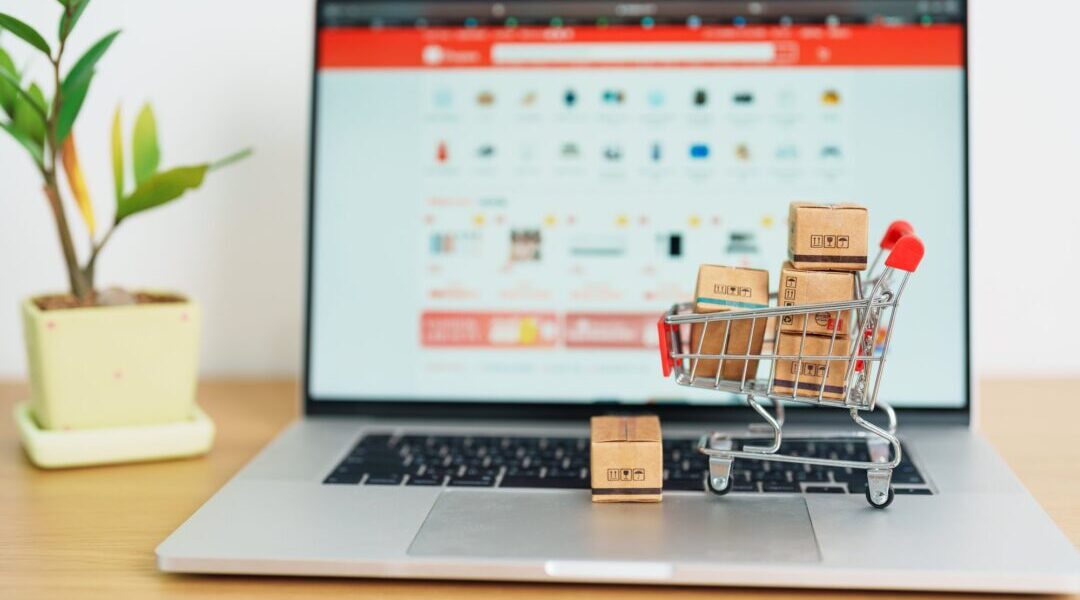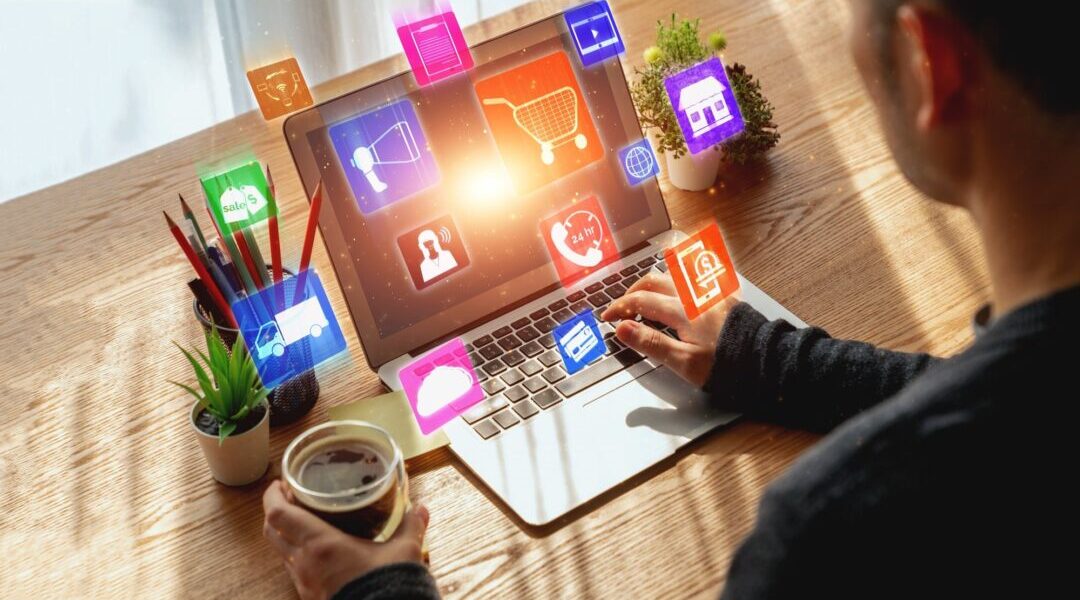As the Covid-19 pandemic took the world by storm, we dove into our devices and the realm of eCommerce exploded. It’s jarring to learn that an IBM US Retail Index report concluded the pandemic was responsible for accelerating the shift from physical stores to online shopping by five years. These online stores rely on B2B eCommerce companies to remain well-stocked and ahead of the competition.

While 2020 opened the floodgates for B2B eCommerce, the demand has increased despite life beginning to return to “normal”. This trend highlights one truth every modern business needs to understand: eCommerce is the new mainstream, and it’s not going anywhere. Manufacturers, dealers, and suppliers all need to sharpen their eCommerce strategies to keep up with societal shifts and consumer desires.
B2B eCommerce Trends for 2022
With 2022 still keeping us on our toes, many businesses will continue to rely on B2B eCommerce sites to curate the ideal shopping experience. McKinsey reported that a staggering 75% of B2B buyers preferred an online approach to purchasing during the pandemic. Two years later, this once survival tactic has emerged as an industry trend – a preference even. Today, both buyers and sellers prefer digital self-serve experiences and remote sales assistance over face-to-face transactions.
When trying to embrace the digital sphere, many companies found themselves entangled in a web of pain points never before encountered in their brick-and-mortar stores. First, they realized they lacked an omnichannel presence to engage with and meet consumer demands. Next, it was evident they had neglected their mobile site user experience. Finally, many failed to address the importance of webpage loading times in today’s on-the-go world. These are incredibly costly mistakes to make.
Pain Point 1: Lack of Omnichannel for B2B eCommerce
One particular pain point for B2B eCommerce companies is the lack of an omnichannel presence. This refers to having several available channels (company website, Facebook Messenger, Instagram/Twitter Direct Messages) to connect with your consumers. With the development of the internet, communicating is easier than ever. You know this, and your customers know this. Having various interconnected lines of communication – or an omnichannel presence – is no longer the gold standard; it’s the bare minimum.

The omnichannel approach means that companies maintain their brand presence in both their physical and digital stores. In-store, buyers have easy access to product information through sales representatives and marketing materials. They should expect to experience the same quality of care online through virtual chat/assistants, social media, email, etc.
Embracing your brand’s omnichannel presence is a great first step, but it is crucial to understand that it is just the first step. Without an integrated strategy, customers may get wrong or conflicting information from different channels. Worse, they may not receive a response at all. To make a brand’s omnichannel presence work, the company needs a comprehensive strategy to deliver a unified message. In addition, each channel should function as a small piece of the bigger picture. They must work in tandem to provide clear, consistent, and engaging messaging. Teamwork makes the dream work!
Pain Point 2: Falling Behind the Mobile-First User Experience
Before, eCommerce buyers and sellers relied on desktop computers to interact. As a result, B2B sellers exclusively designed their eCommerce sites to display on large desktop screens.
However, the sweeping popularity of smartphones has changed the demand yet again. On-the-go internet access now has the majority of us reaching for our handheld devices over our computers. In fact, mobile devices now account for 54.4% of all web traffic in the world (and that’s excluding tablets!). Additionally, smartphones accounted for 68.1% of all 2021 website visits. The biggest and most relevant number? In 2021, 73% of all eCommerce transactions happened on mobile phones.
What does this all mean? Your buyers are more likely to check your site on a mobile phone than anywhere else. For B2B eCommerce companies, not prioritizing mobile-first sites can mean lost website traffic, engagement, individual sales, and entire customer bases.
Pain Point 3: Slow Loading Pages in Both Desktop and Mobile Sites
According to a 2019 Backlinko study, the average time a desktop computer takes to fully load a webpage is 10.3 seconds. For mobile phones, it’s significantly longer at 27.3 seconds. Conversely, pages with lots of images/videos take even longer.

Though this may not seem too long, ask yourself how many times you have clicked away. Probably faster than you would care to admit if you’re honest. It’s okay, you’re human. So are your customers. And it appears you may have more in common than you think, as an Akamai study reported *53%* of mobile users abandon sites that take more than three seconds to load.
For eCommerce sites, users overwhelmingly rewarded faster loading sites. Sites that loaded in under five seconds experienced 70% longer sessions and 35% lower bounce rates compared to sites that took 4x longer to load. More importantly, mobile sites that loaded in five seconds or less earned nearly twice the revenue of sites with longer loading times.
Loading times should always be a top consideration when designing B2B eCommerce webpages. While you still need to provide full product information and helpful images, the designer should learn to balance these elements with loading times. After all, what’s the point of having a beautiful interface if no one sticks around to see it?
Optimizing eCommerce Sites Is Easy—Let Us Show You
Creating an engaging experience for your buyers is complex, but it doesn’t have to be difficult. At its core, it’s a matter of identifying pain points in the customer experience that present obstacles to their purchasing journey. Reconfigure these roadblocks into well-paved roads, and watch your online business soar.
Zobrist is a company that specializes in delivering enterprise-level eCommerce via a mobile-first shopping experience. Our expertly curated tools—such as Mobiecom—can accelerate both your webpage loading times and your entire company. Please reach out so we can better serve you to best serve your customers today!




